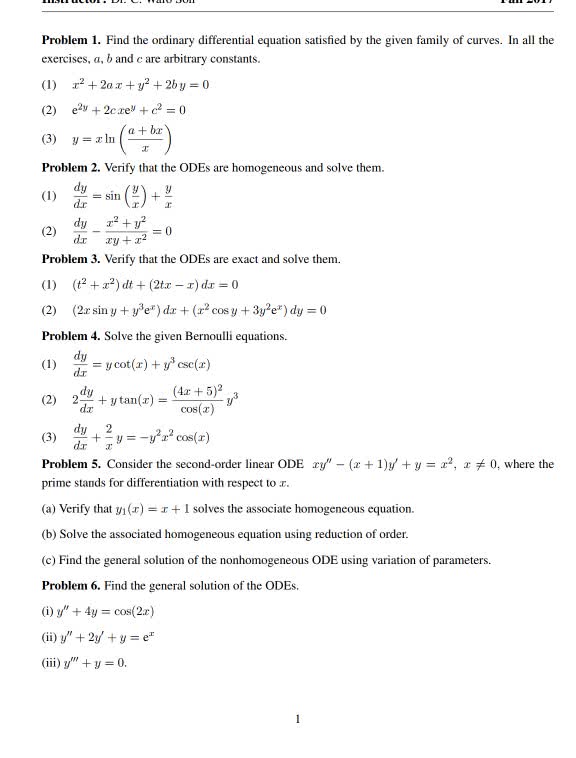18.03 Lecture Notes - Lecture 11: Numerical Methods For Ordinary Differential Equations, Homogeneous Function, Exponential Growth
Document Summary
There are three forces acting on the mass: the spring force (restoring force), gravity, and friction. The general solution to any functions to a homogeneous rst order ode using sepatation of variables. There are in nitely many solution functions to a homogeneous rst-order linear differential equation, and they are all constant multiples of one nonzero solution. Find solutions to any inhomogeneous rst order differential equation by rst nding the solution to the associate homogeneous function, by nding one function, and applying superposition. If it is, go through the steps of separation of variables. Check that the de is a rst-order ode. See pages 46-48 of lecture notes for rigorous justi cation of the heuristic multiplication by dt. Step two: in order to solve in-homogeneous problem, try a trial function and then plug it in. Step one: solve associated homogeneous equation with q = 0. We know that so we multiply the entire equation by alpha.


